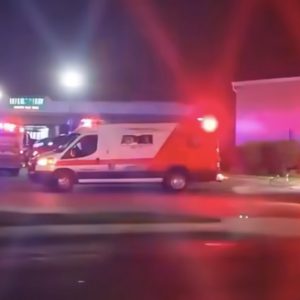A video of a tricycle driver with an extreme head lice infestation has captured the attention of social media users, sparking widespread concern among Filipino netizens. The shocking footage, initially shared by Facebook user Primo Onipa,
highlights the severity of untreated lice infestations and serves as a reminder of the importance of proper hygiene. Though the original post has since been deleted, its impact continues to resonate, opening discussions about health, cleanliness, and the risks of ignoring minor issues that can spiral into serious problems.
The Viral Video That Sparked Concern
In the now-viral clip, the tricycle driver can be seen with head lice visibly crawling down the back of his neck and onto his shirt. The scene is unsettling, showcasing a case of lice infestation so severe that it’s impossible to ignore. Onipa shared the footage to raise awareness, urging his fellow drivers to prioritize personal hygiene, particularly given their constant interaction with commuters.
This video has become a talking point across various platforms, not just for its shock value but also for the conversations it has sparked about hygiene practices and public health.
Why Head Lice Are More Than Just a Nuisance
While lice infestations are often dismissed as minor inconveniences, experts warn that untreated cases can escalate into serious health concerns.
Severe lice infestations, like the one depicted in the video, can cause immense discomfort and itching, leading to open sores and secondary infections. Left untreated, these parasites can feed on the host’s blood to such an extent that it could result in anemia and malnutrition, as noted by Dr. Enrique Collantes from Derma Clinic.
The Science Behind Head Lice Infestations
Head lice are small, wingless insects that survive by feeding on human blood. They are highly contagious and spread primarily through direct contact with an infested person or by sharing personal items such as combs, hats, or brushes.
Common Symptoms of Head Lice Infestation:
Persistent itching, particularly on the scalp and neck.
Visible lice or nits (eggs) attached to the hair shaft.
Irritated or red patches on the scalp due to scratching.
Lice can also survive temporarily on items like bedding, towels, and upholstered furniture, creating additional risks for transmission.
Treatment: Simple But Necessary
According to Dr. Recasata, treating head lice is relatively straightforward and accessible. A specialized shampoo, often priced around P500 per bottle, can eliminate lice effectively when used correctly. However, untreated infestations can quickly escalate, making early intervention crucial.
Effective Steps for Treating Head Lice:
Use a Lice Shampoo: Apply a medicated shampoo designed to kill lice and their eggs. Follow the instructions carefully for optimal results.
Comb Thoroughly: Use a fine-toothed lice comb to remove nits and dead lice from the hair.
Wash Bedding and Clothing: Clean all items that may have come into contact with lice in hot water to prevent re-infestation.
Disinfect Brushes and Combs: Soak personal grooming items in hot water for at least 10 minutes.
Repeat Treatment: Many products recommend a second application after a week to ensure no eggs hatch into new lice.
Preventive Measures: Keeping Lice at Bay
Preventing head lice requires vigilance, especially for those in close contact with others, such as drivers, commuters, and school-aged children. The National Health Service (NHS) emphasizes these preventive steps to minimize the risk of infestations:
Avoid Sharing Personal Items: Never share combs, hats, or pillows.
Maintain Cleanliness: Wash clothes and bedding regularly in hot water.
Vacuum Regularly: Clean floors and upholstered furniture to remove any lice that may have fallen off.
Check Regularly: Parents should frequently check their children’s hair for signs of lice, especially after playdates or school activities.
These simple habits can go a long way in ensuring a lice-free environment for you and your loved ones.





